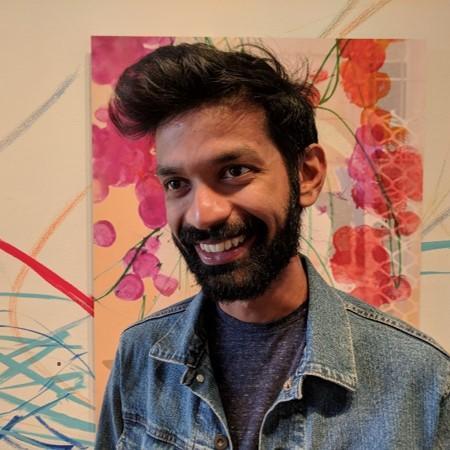
An unexpected academic, Darshan is an aerospace engineer by training, with a background in combustion chemistry and sustainability ethics from the University of Michigan. Before coming to Arizona State University, he, as a AAAS Science and Technology Policy Fellow, worked at the US Environmental Protection Agency on climate change resilience and community-based air pollution monitoring, and then at the US Department of Energy as the Technical Lead of the Wave Energy Prize. You can contact him at darshan.karwat@asu.edu
Grants
Projects
| Darshan's projects |
|---|
|
Many communities across the US are fighting similar struggles around energy, environmental, and climate justice issues, but unfortunately, much of the community-based scientific and engineering work addressing these issues has been fragmented and hyper-local. The question then becomes, How can we do scientific and engineering work that benefits the greatest number of communities? We're exploring the scientific and engineering needs of community groups working for environmental, climate, and energy justice. Our learning from this use-inspired research will guide the work of re-Engineered, as well as the work of other engineers, scientists, and social scientists interested in such work. |
|
Mapping out where to build a physical community laboratory space Inspired by Auburn University’s off-campus architecture studio, Rural Studio, re-Engineered is exploring where in the Phoenix area we might establish the community outpost for re-Engineered so that we leverage our place and are socially embedded in the Valley. We’ll conduct our use-inspired work there. Using geospatial mapping, we are conducting a deficit-asset mapping project to understand where in the Valley of the Sun the strongest confluences of energy poverty (related to residential consumption and transportation), exposure to air pollution, low socioeconomic status, and locally-important community resources are. We are doing this work with guidance from Chispa, a local, community-based environmental group |
|
Accelerating community engagement and building the tools to link community profiles and engagement strategies to actual energy outcomes or, Prizes for Community-Led Deep Decarbonization: From Practice to Policy There is friction between the urgency with which we need to address climate change and global warming, and how long it takes to effectively engage with communities in those efforts. Further, there are no practical ways to to visualize, quantify, or evaluate the effectiveness of community engagement and participation in promoting environmental, energy, and climate justice. So, using the community plans and technical performance data of the 50 geographically, demographically, and socioeconomically diverse communities participating in the $5 million Georgetown University Energy Prize (GUEP), we are developing analytical tools using the to link the diverse forms of community engagement and participation performed in GUEP with the technical energy efficiency outcomes achieved in different social and economic contexts. Also, given the significant political buy-in required for each community’s participation in GUEP, we anticipate that the results of our work will help shape guidance and policies to accelerate the adoption and implementation of energy efficiency in the US. |
|
When Mental Walls Lead to Physical Walls Engineers have helped design and build the world you live in. Engineers and engineering are behind your phone, your home, and your ability to navigate life. Engineers also design and build structures like border walls. This immersive public art and engagement project--comprised of a self-standing border wall sculpture and a museum of walls--exposes experiencers to the political nature of engineering. The installation was first displayed at the April First Friday on April 6, 2018, in downtown Phoenix. You'll have more chances to see it on the ASU Tempe and Polytechnic campuses soon. For more pictures, go to re-Engineered's blog. |
|
Aligning engineering jobs with values How do we get more engineers working in the areas of peace, social justice, and environmental protection? Universities are training the most socially- and environmentally-sensitized generation of students, but because of challenges ranging from student debt to lack of resources on the part of organizations, engineering students can find it difficult to find work that aligns with their personal values. In collaboration with Drexel University and the University of California, San Diego, re-Engineered is building a comprehensive platform to elevate good paying engineering jobs in peace, social justice, and environmental protection. We are looking for partners and collaborators--from universities to employers--in this effort, so please reach out to us if you're interested! |
| How do we move from simply saying that engineers should be more socially and environmentally minded to giving them actual tools to be so? Darshan and his colleagues wrote Activist Engineering: Changing Engineering Practice by Deploying Praxis in 2014, which made a philosophical case for activist engineering, and now, he is working on figuring out practical steps that engineers can take to be activist engineers. re-Engineered itself is an expression of this approach to engineering, but different engineers, given the circumstances they face, will have different approaches, struggles, and opportunities. Step 1: self-reflection... |